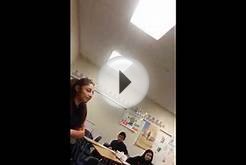Americans of all ages have an insatiable appetite for education and self-improvement, and no society in history has educated its young more persistently or at greater expense than the US. Around 85 per cent of students complete high school and the US also has a higher percentage of college graduates (some 55 per cent) than any other country. Many American universities and other higher education institutions are internationally renowned (the US arguably has the best undergraduate education system in the world) and their student bodies include thousands of foreign students from all corners of the globe.
Full-time education is compulsory in all states and includes the children of foreign nationals permanently or temporarily resident in the US for a minimum of one year. However, admission to a public school for foreign children is dependent on the type and duration of the visa granted to their parents, and attendance may not be possible. Compulsory schooling lasts from 8 to 13 years (depending on the state) and usually commences at the age of six or seven and continues until between 16 and 18. The typical American receives 12 years of education, although the average is lower in rural areas and small towns (apart from university towns), and higher in metropolitan areas.
Public and private schools in the US
There’s no federal education system in the US, where education is the responsibility of individual states and districts. Consequently, education standards and requirements vary considerably from state to state and district to district. No fees are payable in public (state) primary and secondary schools, which are attended by around 90 per cent of children (schoolchildren of all ages are usually referred to as students). The other 10 per cent attend private fee-paying schools, most of which are church-sponsored (often Roman Catholic) parochial schools. Most public schools (pre-school, elementary and high) are co-educational (mixed) day schools.
Private schools include day and boarding schools and are mostly co-educational (often abbreviated to ‘coed’, which confusingly also refers to female college students), although some are single sex. There’s also a growing trend (an increase of 15 per cent per year) for children to be educated at home and it’s estimated that some 2 to 3 million Americans (3 per cent of the school-age population) are taught by parents at home or in communal classes.
Education levels
Formal education comprises three levels: elementary, secondary and higher. Vocational training, adult education, and special schools or classes also form part of the education programme in most states. Many states and communities provide schools or special classes for children with special educational needs, including those with emotional and behavioural problems, moderate and severe learning difficulties, communication problems, partial hearing or physical disabilities. There are also private schools catering for gifted and talented children, and most public schools have gifted and talented programmes.
Separation of state and religion
The US constitution requires the separation of state and religion and forbids religious observance in public schools (although there are plans to restore school prayers in some areas), but children are still expected to participate in the ritual morning pledge of allegiance to the American flag in many schools (although the words ‘under God’ are optional!). With the exception of a few private and some parochial schools, school uniforms are rare, although they’re becoming more popular at public schools, particularly in large cities.
A unique aspect of the US education system is the high degree of parental involvement. ‘Parent power’ isn’t only accepted, but is welcomed and encouraged through local Parent Teacher Associations (PTAs) and Home and School Associations (HSAs) attached to every school. PTAs and HSAs meet regularly and concern themselves with many aspects of a school’s affairs including the curriculum, facilities, school hours and after-school activities and programmes. Parents are encouraged to attend meetings and show an interest in the school and their children’s education (it’s also a good way for newcomers to make friends). Schools organise parent days, ‘back to school’ nights and parent-teacher conferences, where parents can meet teachers and examine their child’s school timetable.
Educational standards in the US
In the last decade or so, there has been extensive debate over the declining standards and low achievements of American students, particularly when compared with students in other leading industrialised countries such as Germany and Japan (and even countries such as Korea and Taiwan). In tests given to American and foreign students, the US has had a poor showing. American high school students and graduates (from public and private schools) score particularly badly in mathematics (math) and science, many can barely read or write, and most know virtually nothing of the wider world or even their own history. Even colleges and universities haven’t escaped censure and have been criticised for being too expensive, extravagant, having poor teaching standards, and inadequate planning.
In recent years, many parents concerned about the decline in public education have turned to private schools. Although the cost of private education is high, many American parents consider it an acceptable price to pay, particularly if the outcome is a bachelor’s or master’s degree from a prestigious university, with its resulting monetary value in the job market. Education for its own sake or the love of learning is rare in the US, where education and qualifications are judged primarily on their earning power (particularly MBAs). Foreign families resident in the US for a short period may prefer to send their children to a private international school, where they will be less indoctrinated in American ways. The organisation and curricula of most private schools and colleges are similar to those of public schools, although the administration differs.
Schools for foreigners in the US
Around one child in 20 enrolled in public schools cannot speak English or speaks it so poorly as to require language assistance. If your children don’t speak English fluently, enquire whether English as a Second Language (ESL) classes are available or whether study is available in other languages. In some states children are taught in many foreign languages. For example in California public high schools commonly teach in Arabic, Armenian, Cantonese, Japanese, Korean, Russian, Spanish, and Tagalog (Philippines). In some other states students are taught in no foreign languages at all. Most public schools don’t offer ESL courses unless they’re located in areas where many new immigrants have settled. Private schools may also make no provision for students who don’t speak English fluently.
This article is an extract from Living and Working in America. Click here to get a copy now.











